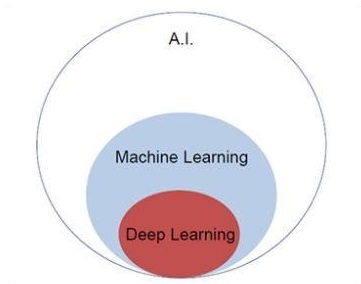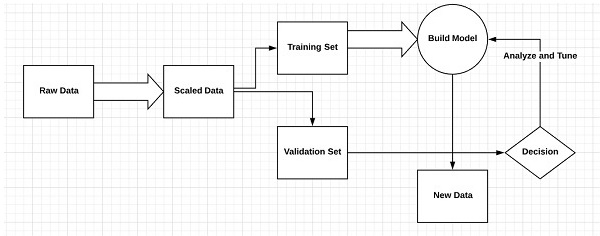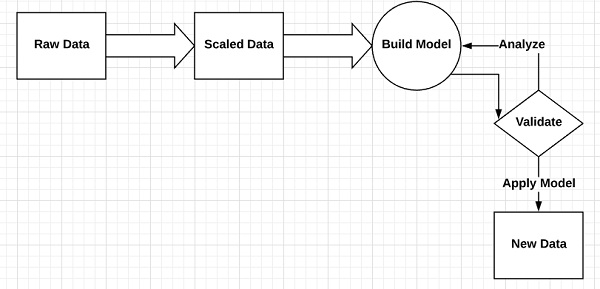
- TensorFlow Tutorial
- TensorFlow - Home
- TensorFlow - Introduction
- TensorFlow - Installation
- Understanding Artificial Intelligence
- Mathematical Foundations
- Machine Learning & Deep Learning
- TensorFlow - Basics
- Convolutional Neural Networks
- Recurrent Neural Networks
- TensorBoard Visualization
- TensorFlow - Word Embedding
- Single Layer Perceptron
- TensorFlow - Linear Regression
- TFLearn and its installation
- CNN and RNN Difference
- TensorFlow - Keras
- TensorFlow - Distributed Computing
- TensorFlow - Exporting
- Multi-Layer Perceptron Learning
- Hidden Layers of Perceptron
- TensorFlow - Optimizers
- TensorFlow - XOR Implementation
- Gradient Descent Optimization
- TensorFlow - Forming Graphs
- Image Recognition using TensorFlow
- Recommendations for Neural Network Training
- TensorFlow Useful Resources
- TensorFlow - Quick Guide
- TensorFlow - Useful Resources
- TensorFlow - Discussion
Understanding Artificial Intelligence
Artificial Intelligence includes the simulation process of human intelligence by machines and special computer systems. The examples of artificial intelligence include learning, reasoning and self-correction. Applications of AI include speech recognition, expert systems, and image recognition and machine vision.
Machine learning is the branch of artificial intelligence, which deals with systems and algorithms that can learn any new data and data patterns.
Let us focus on the Venn diagram mentioned below for understanding machine learning and deep learning concepts.

Machine learning includes a section of machine learning and deep learning is a part of machine learning. The ability of program which follows machine learning concepts is to improve its performance of observed data. The main motive of data transformation is to improve its knowledge in order to achieve better results in the future, provide output closer to the desired output for that particular system. Machine learning includes “pattern recognition” which includes the ability to recognize the patterns in data.
The patterns should be trained to show the output in desirable manner.
Machine learning can be trained in two different ways −
- Supervised training
- Unsupervised training
Supervised Learning
Supervised learning or supervised training includes a procedure where the training set is given as input to the system wherein, each example is labeled with a desired output value. The training in this type is performed using minimization of a particular loss function, which represents the output error with respect to the desired output system.
After completion of training, the accuracy of each model is measured with respect to disjoint examples from training set, also called the validation set.

The best example to illustrate “Supervised learning” is with a bunch of photos given with information included in them. Here, the user can train a model to recognize new photos.
Unsupervised Learning
In unsupervised learning or unsupervised training, include training examples, which are not labeled by the system to which class they belong. The system looks for the data, which share common characteristics, and changes them based on internal knowledge features.This type of learning algorithms are basically used in clustering problems.
The best example to illustrate “Unsupervised learning” is with a bunch of photos with no information included and user trains model with classification and clustering. This type of training algorithm works with assumptions as no information is given.
